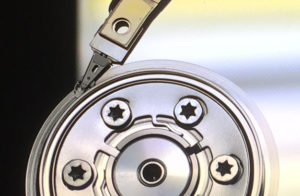
A hard drive badly burnt in a house fire.
You’re getting a new computer, or just replacing your hard disk drive (HDD) with a solid-state drive. What do you do with your old storage media?
This is one of the most common questions we receive — and it’s an excellent question to address to a data recovery provider. After all, we’re able to recover files from hard drives that have been in house fires and floods; we know what it takes to permanently destroy data.
The quick answer: You can use media sanitization software to securely erase your HDD, provided that it’s currently in a working condition. Some popular tools include:
If your hard drive isn’t working, it must be degaussed, shredded, or incinerated. Consult your local electronic recycling center (after all, you really shouldn’t be tossing a hard drive in the trash; all drives have plenty of recyclable components).
If you have a large quantity of hard drives that need to be sanitized, the best practice is to work with a media sanitization provider. Datarecovery.com provides these services, and we can include verification and chain-of-custody reports upon request to aid in compliance. To learn more, call 1-800-237-4200 or request a quote online.
Below, we’ll address some common questions regarding HDD disposal techniques.
Can I physically destroy my hard drive to get rid of data?

The platters and actuator heads of a hard drive.
Yes, but to render data unrecoverable, you’ll need to target the platters. Those are the magnetic discs that contain your actual data; breaking other components might make the drive unusable, but if the platters are still intact, data recovery is still technically possible.
You could physically destroy a hard drive on your own by drilling holes through it or removing the platters and breaking them apart. That’s a labor intensive process, so it’s really not recommended — but if you have the time and tools (and you want to see what the inside of your HDD looks like), it’s certainly doable.
After destroying your platters, make sure to dispose of the leftovers in an environmentally friendly way.
What does NIST recommend for HDD disposal?
The National Institute of Standards and Technology (NIST) provides comprehensive guidelines for media sanitization, including hard drive disposal. NIST Special Publication 800-88 Rev. 1 outlines three primary methods for sanitizing data storage devices:
- Clear: This involves overwriting the data on the hard drive with a pattern of ones and zeros. This is simple and cost-effective, but it’s not appropriate for sensitive data.
- Purge: This method uses specialized software or hardware tools to overwrite the data on the hard drive multiple times with complex patterns (see the secure sanitization programs we mentioned in the introduction to this article). Purging is generally considered a more secure option than clearing, but it can be time-consuming.
- Destroy: This involves physically destroying the hard drive to render the data unrecoverable. As mentioned earlier, this method can be effective but comes with its own set of challenges, including environmental concerns and the potential for hazardous material exposure.
To learn more about NIST standards, read: What Are the Standards for Secure Data Sanitization?
Can I just encrypt my hard drive instead of disposing of it?
Encrypting your hard drive can be an effective way to protect your data, but it’s not a foolproof solution. If the encryption key is compromised or the encryption software has zero-day vulnerabilities, your data could still be at risk.
Moreover, encryption doesn’t address the physical security of the hard drive itself. If the hard drive is lost or stolen, the data could still be accessed if the encryption is bypassed.
For at-scale media sanitization, trust the experts at Datarecovery.com
HDD disposal requires careful consideration to ensure the secure and responsible handling of sensitive data. You can handle this on your own — but at scale, sanitization should be handled by a qualified data services provider.
Our specialists meticulously maintain chain of custody records and adhere to NIST SP 800-88 standards, ensuring your project stays on track and compliant. This comprehensive approach not only streamlines your media migration or sanitization process, but also significantly reduces costs.
To learn more, submit a case online or call 1-800-237-4200 to speak with an expert.




